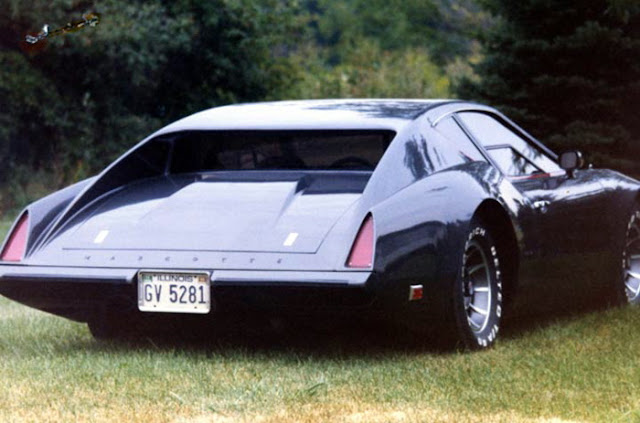Status Minipower, an early mid-engine take on the Seven
As a car crazy teenager, I followed the world of unusual cars obsessively. Having an industrial designer and former General Motors car stylist for a dad meant that I had access to a rich library of automotive literature and so it was I discovered the Status Minipower. I just loved its "doorstop" shape and open front wheels. It was like one of Colin Chapman's early F1 cars had gotten friendly with a 7..
As the story goes, former Vehicle Engineering Manager at Lotus Cars, Brian Luff, set-up his own freelance engineering company after he left the employ of Lotus. An operation that would go onto design all manner of innovative vehicles, despite its tumultuous run.
 |
| The Status Minipower, head on. |
In 1971 Status Company began in Norwich, Norfolk, where Luff set himself to producing automobiles and kits. Numerous name changes and relocations followed.
From 1971 to 1973 "Status Motors" was based in New Buckenham in Norfolk, from 1973 to 1974 it was "Engine Marianne", and from 1974 to 1975 "Status Company" yet again. The most recent company, "Brian Luff Limited", had its seat from 1976 to 1977 in Essex, Jersey from 1980 to 1981, and Bawburgh at Norwich from 1985 until 1996.
The company brand name came from Luff’s favorite band; Status Quo, incidentally.
The first Status model was the Symbol, based on Mini mechanicals, with double wishbones all-round, Austin 1100cc driveshafts and A-Series power. Light (450kg) and very agile. The engine and transmission were fitted to the rear of a steel space frame chassis, with double wishbone front suspension.
The non-stressed body was made from GRP. The windscreen was flat glass and there was no roof (save for one prototype). Designed as a rear engine Mini based alternative to the Lotus 7 it was a basic wind-in-the-hair sports car.
Eight were sold before Luff changed the name to Minipower in 1972, in an attempt to give it a more serious image rather than just a clever play on words. Despite Colin Chapman reputedly loving it, rave reviews from the motoring press, and it being one of the finest handling specialist cars ever committed to metal and fiberglass, just 20 more chassis were sold before it was withdrawn in 1973.
The project was bought by a Yorkshire-based restaurateur, but nothing more was heard of the car. It's a shame really.
The car was very likely an inspiration for future kits, such as the Sylva Mojo and Jetstream SC250.
Sources:
Maximum Mini Blog (for some images and content)
 |
| Brian Luff and the Status Minipower |
 |
| The Status Minipower, shown with an Arkley SS and a Mini Marcos |
 |
| The Status Minipower, in green with square headlamps |
 |
| The Status Minipower, in green with square headlamps |
 |
| The Status Minipower. |
 |
| The Status Minipower, in green with a hard-top at Donnington, UK, for the 25 yr Mini Gathering (84?) |
 |
| The Status Minipower, in green with a hard-top at Donnington, UK |








We have one here in New Zealand. It was imported & he named it Edgar Specialist Cars. . . God knows why as we now can't get it registered as a Status Mini Power which is so disappointing. Even with all paperwork to prove it is.
ReplyDeleteYep, that's how it is in this sad little country. Most things are run by idiots these days, and the dictator who runs the low volume vehicle certification is a down and out hot rodder, sadly. Thing is, when the Land Transport Safety Authority realised that people actually built cars in small numbers or one offs, their IT and Computing ability was so miserable they reckoned it could only cope with the names of the major manufactures - likely those who could pay a handsome backhander.
ReplyDelete